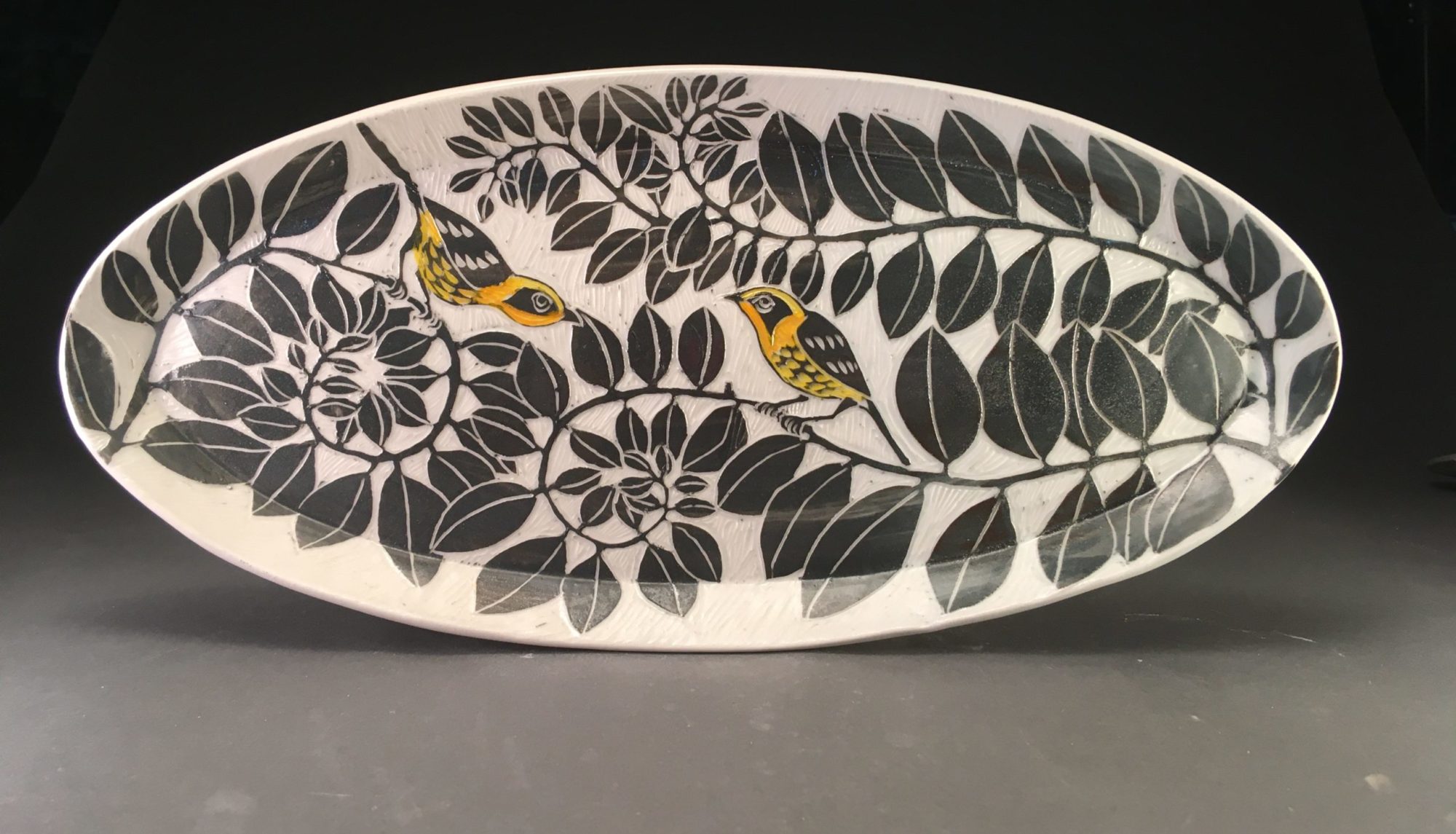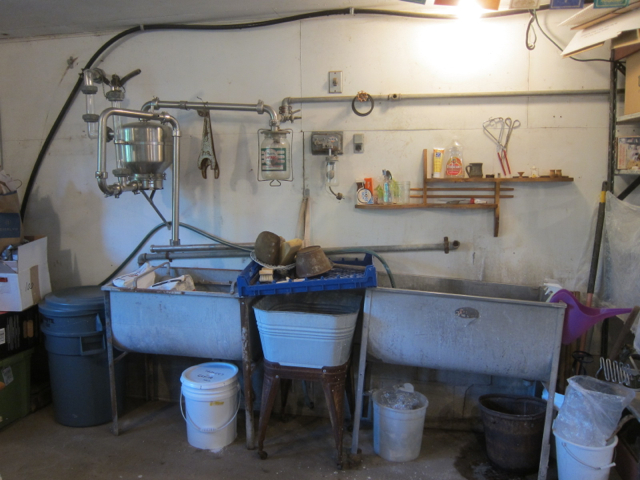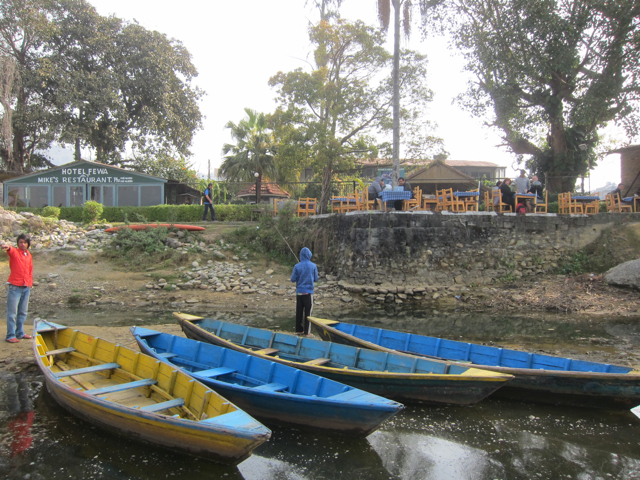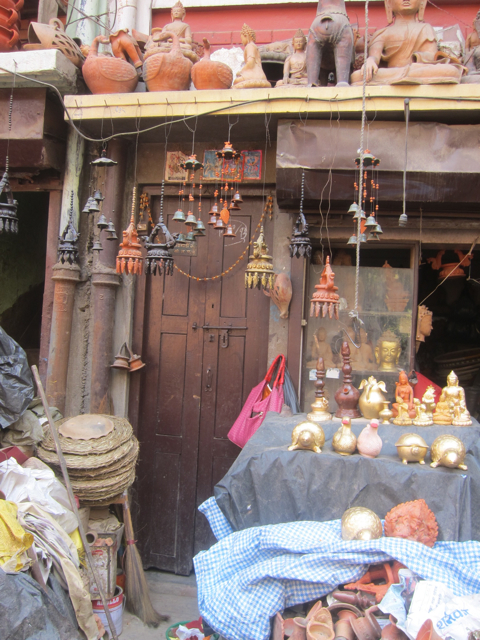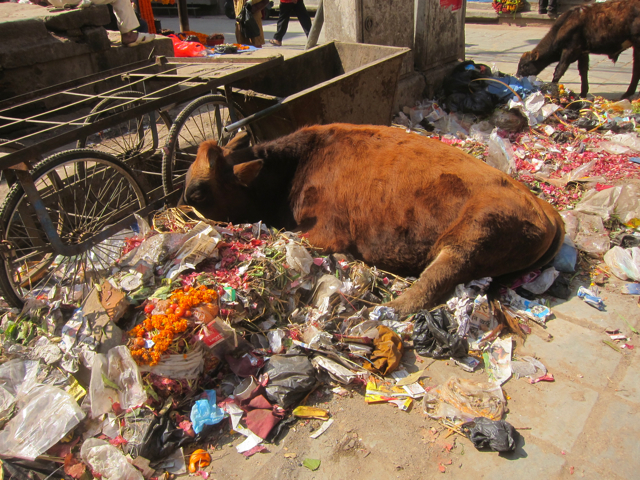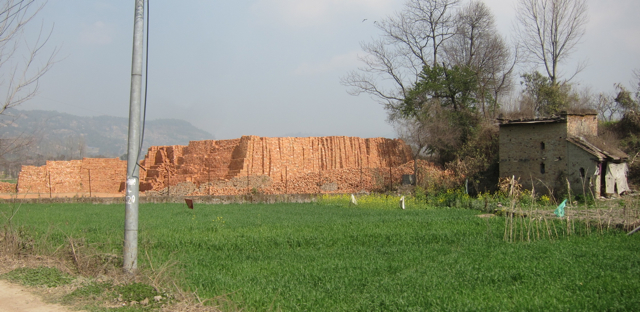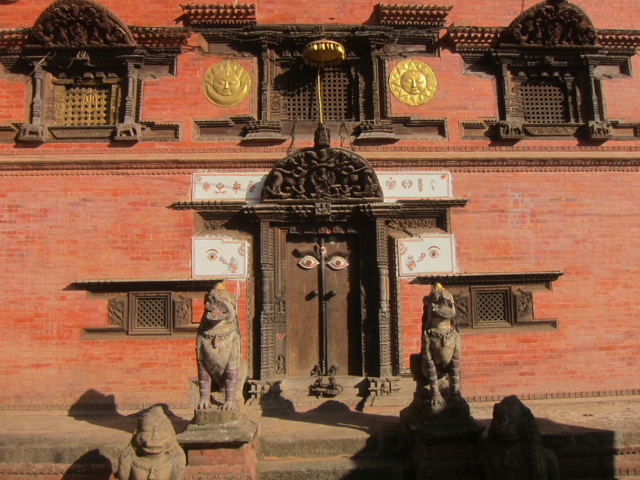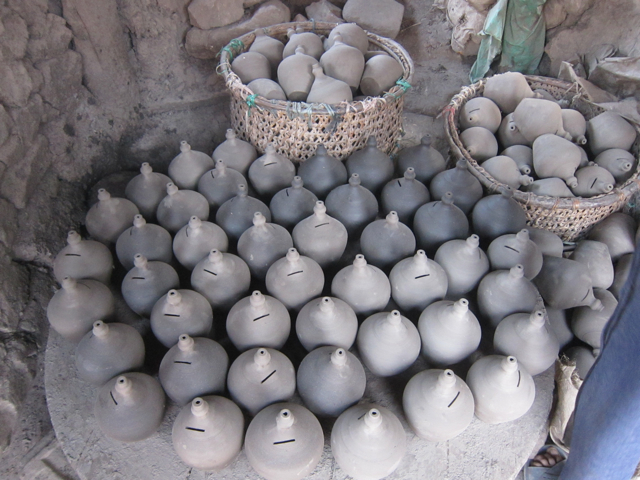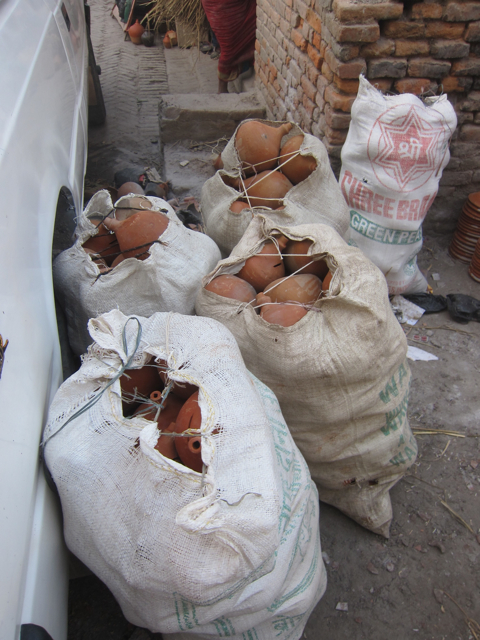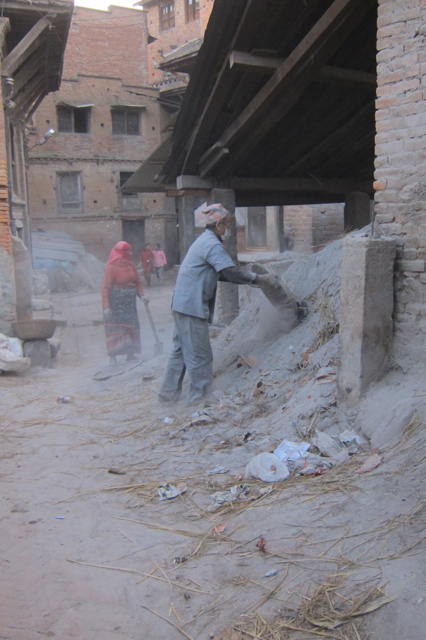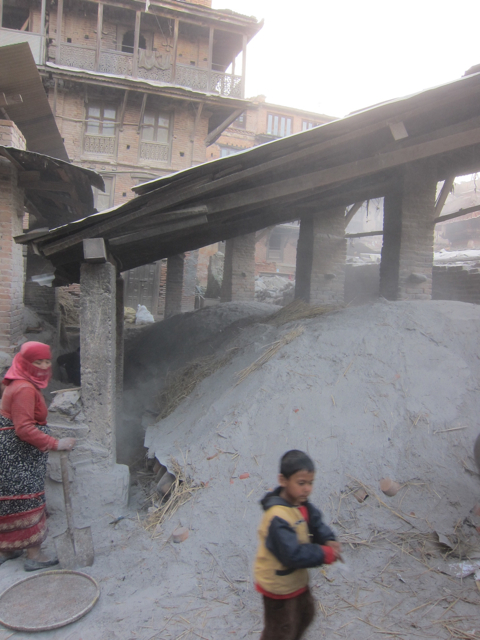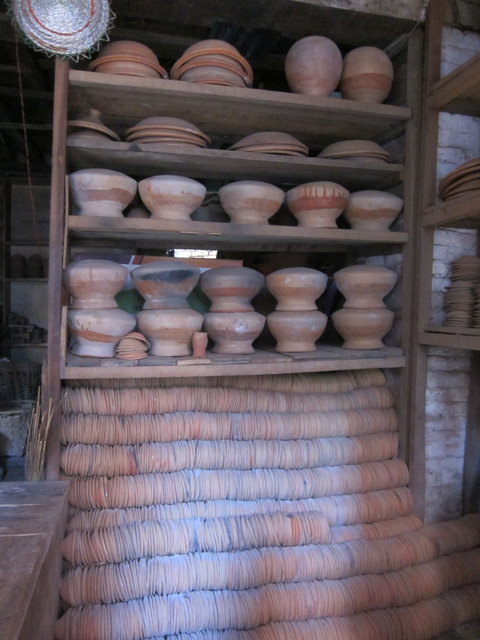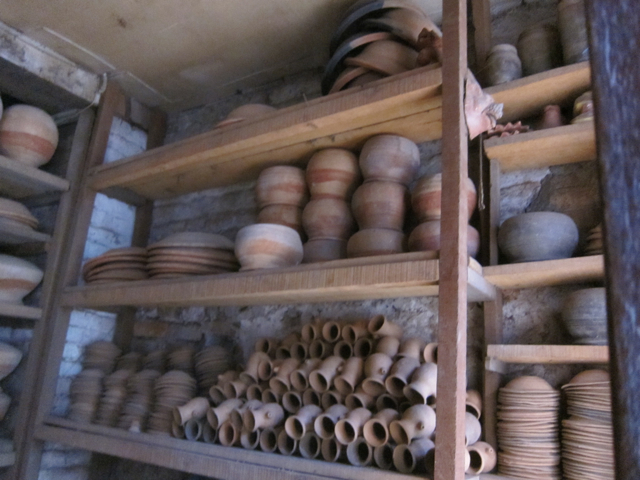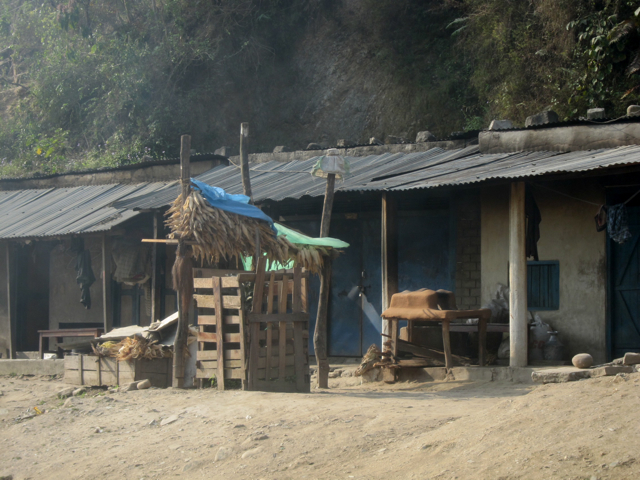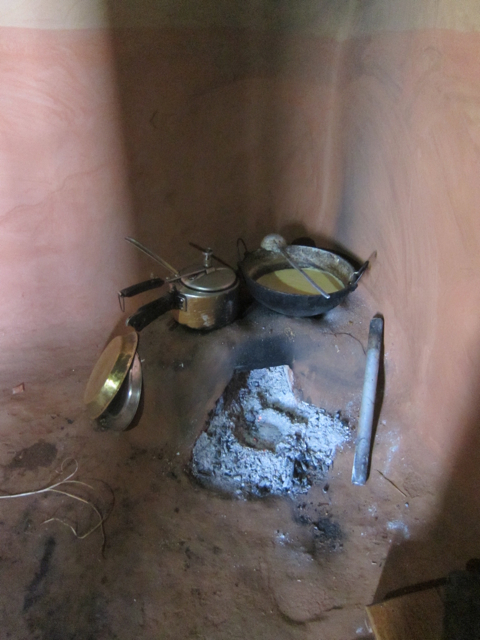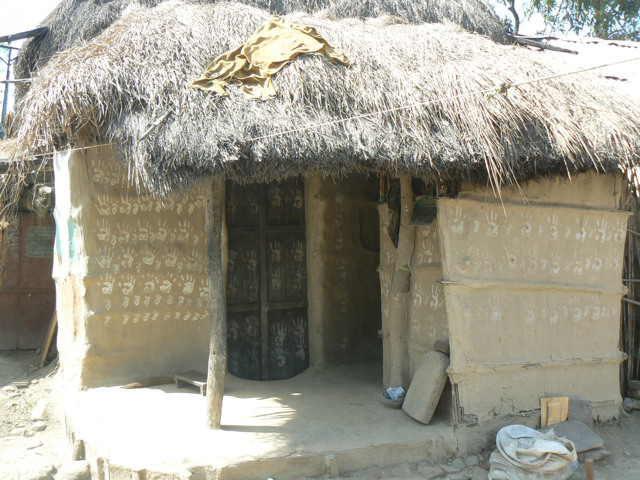As many of you who have read my blog in the past know, I recently moved from the city of Chicago to the countryside in Minnesota.
The first practical consideration of moving to become a “country” potter was: Where would I make pottery? And the place I thought of right away was my grandfather’s old milkhouse on the family farm where my mother is living. I asked my mother if that would be okay and, as it was not in use, and had last been used as a chicken coop, she thought it was a fine idea.
It had what we needed: electricity and [cold] running water. It also had a lot of good memories for me. I feel so lucky to have known my grandfather for almost 40 years. He was a dairy farmer. I always took for granted that what he did was a natural outgrowth of living. Now I know that is life on a farm. He worked outside; he worked with living things.
Let me take you to a place I love, the milkhouse 40 years ago. Imagine for a moment these sounds and smells: the radio is playing, you can hear it over the rhythmic chugging of the milking machine and occasional lowing of the cows. Floury dust from the grain chutes floats in the path of sunbeams. You can hear the cows chewing and blowing into their grain. My grandpa is here. He’s here twice a day; moving purposefully, efficiently even lovingly around the milk house, milking his cows.
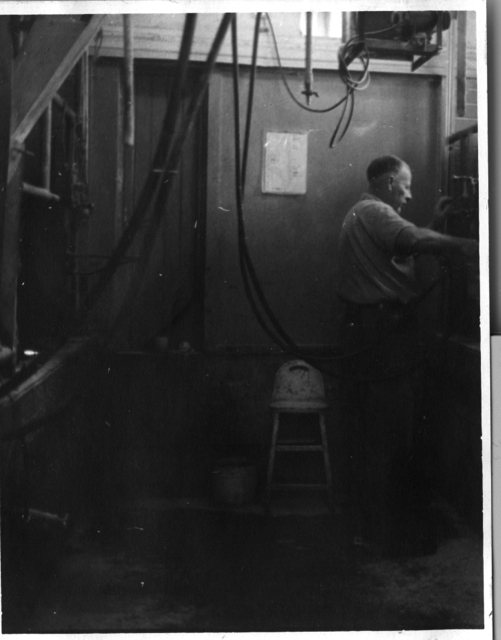
Patiently, he teaches me how to wash the cow’s udder and how to milk, filling up a little pan with warm frothy milk which I always drink. He lets me pull the line to send a portion of grain down to the waiting cow. I marvel at the fascinating system of ropes and pulleys, and weights he uses to open and close doors, gates, troughs and I am thrilled to be able to see the milk flow through the clear pipes which turn and weave through the ropes and rails and cows until they disappear through the wall and reappear in an even more fantastic tangle of floating balls and glass jars in the next room.
It was a wonderful magical place. I loved spending time there with grandpa. I can always find him here, whether it is the end of a long summer’s day when the buzzing of flies and the swishing of cows’ tails adds to the mélange of sounds or it is predawn on a cold winter’s morn, the waiting cows’ breath rising up, visible as I run past them into the steamy warmth and noise and light of the milk house…

There it is in the background (left) of me with my happy family carrying milk!
So you can imagine that I would love to spend my day there filled with warm memories, surrounded by greenery and the farm my grandfather created. A wonderful place to make things.
Last year, before we moved, I brought up my kiln and wheel and a few supplies on a spring trip to Minnesota so they would be out of the way and ready for me when we arrived.
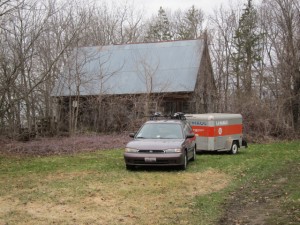 2 months ago, as soon as we got settled in, my husband and I began to make the milkhouse usable for me. We moved out all the old bits left over from when it was a chicken coop, nesting boxes, etc.
2 months ago, as soon as we got settled in, my husband and I began to make the milkhouse usable for me. We moved out all the old bits left over from when it was a chicken coop, nesting boxes, etc.
 Machinery stored there was taken away and then we began to clean, scrubbing the walls, and floor. I removed chicken wire from over the windows and washed the grime from them to let in light. There was a temporary enclosure of paneling that had been put up to protect something
Machinery stored there was taken away and then we began to clean, scrubbing the walls, and floor. I removed chicken wire from over the windows and washed the grime from them to let in light. There was a temporary enclosure of paneling that had been put up to protect something and when we removed that we were delighted to find 2 sinks and a lot of the original machinery my grandfather had installed in his super-modern milkhouse. My favorite are the glass pipes in which, you could see the milk flowing. I love having that on the wall and using the sink he used.
and when we removed that we were delighted to find 2 sinks and a lot of the original machinery my grandfather had installed in his super-modern milkhouse. My favorite are the glass pipes in which, you could see the milk flowing. I love having that on the wall and using the sink he used.
We also worked to clear a huge amount of brush from around the building. Many brambles had grown up around it and wild grape had begun to take over the upper reaches.Quite a few volunteer weed trees were also taken down. Here is how the milkhouse looked on previous visits:
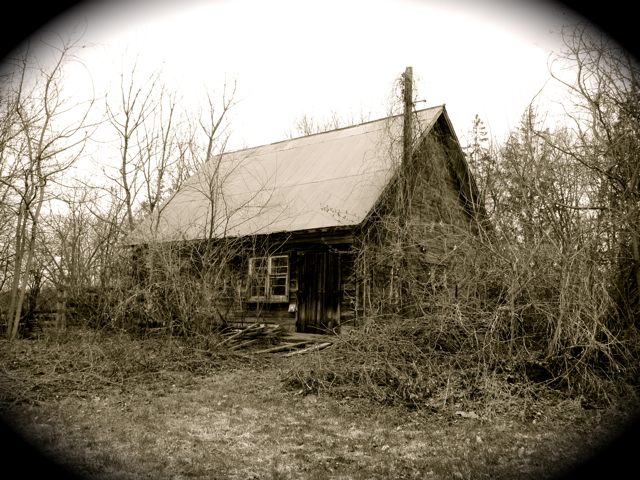 And here it is after we cleared around it.
And here it is after we cleared around it. 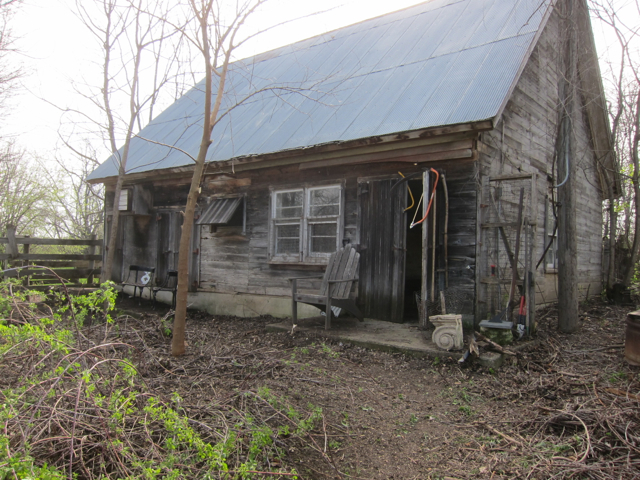

You can see the huge pile of brush and grapevine that we cleared in the bottom right of the photo. And it looks even better now!
I could feel the light and energy begin to flow much better in and around the building. I had planned to make a list of all the areas I needed (I am heavily influenced by Emily Murphy and her post about her wonderful studio) but I have less space and since I really don’t want to change anything about the building or permanently install anything because it is still, at its heart, my grandfather’s milkhouse, I am more constrained. Things evolved a bit more organically.
As things were made and moved in; the table went in the middle,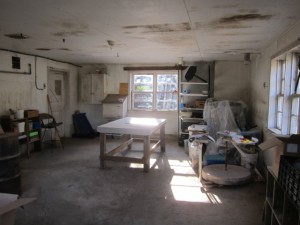 the wheel went by the east window since I usually like to throw in the morning with the light coming in.
the wheel went by the east window since I usually like to throw in the morning with the light coming in.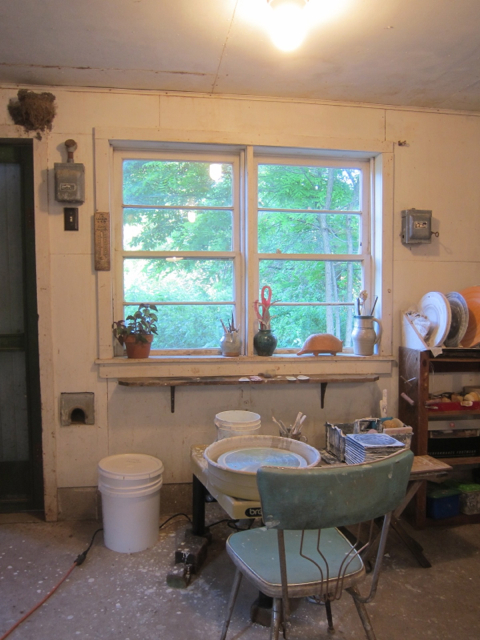 Yes, that’s an old swallow’s nest in the upper left of the photo and the chair is salvaged from a shed.
Yes, that’s an old swallow’s nest in the upper left of the photo and the chair is salvaged from a shed.
My carving area is often outside but for rainy (or mosquito-y days) we found an old wooden ironing board in the garbage and made it into a counter by the west window for carving in the afternoon light. Shelves were fit in where we could .
Shelves were fit in where we could .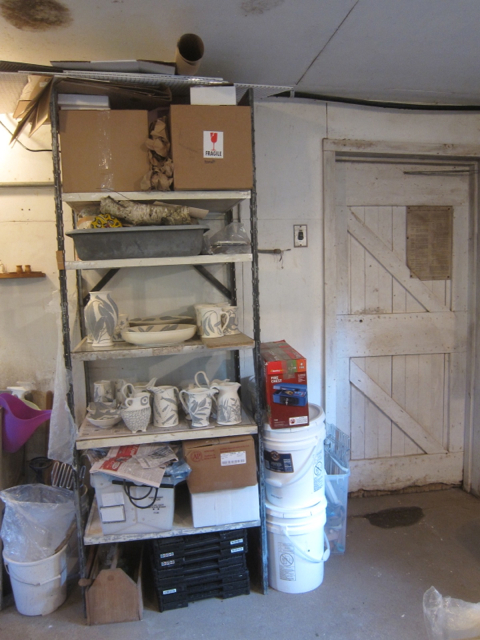 My grandfather’s area where he kept track of his cows and which ones he was breeding with what prize-winning bull is my area to track my calendar and production. His cupboard where he kept iodine and bovine medicines is where I have my slip and wax and colorants.
My grandfather’s area where he kept track of his cows and which ones he was breeding with what prize-winning bull is my area to track my calendar and production. His cupboard where he kept iodine and bovine medicines is where I have my slip and wax and colorants. I do not really have enough room to have a separate packing area or a photo area or a glaze-mixing area- as much as I would love to have those but they can all be done in the general studio area.
I do not really have enough room to have a separate packing area or a photo area or a glaze-mixing area- as much as I would love to have those but they can all be done in the general studio area.
My husband built me a beautiful table and we covered it with canvas. The clay is stored under the table in a built in area. Until I could get my box of studio supplies that the movers buried in the middle of our storage unit, I went to the junk store in search of a few supplies: a plastic lazy susan to use as a makeshift banding wheel when I carve as well as a rolling pin, some molds etc.
Until I could get my box of studio supplies that the movers buried in the middle of our storage unit, I went to the junk store in search of a few supplies: a plastic lazy susan to use as a makeshift banding wheel when I carve as well as a rolling pin, some molds etc.
Another day was spent trying to refurbish a huge kickwheel friends had lent/given us. That resulted in a much better understanding of kickwheels, how ridiculously heavy they are and why we wouldn’t be able to really get this one working very well.
A friend of my mother’s generously donated a dresser, some shelves and a comfy arm chair; a quick trip up to Minneapolis to Continental Clay where they were wonderfully helpful and I was ready to go!
a quick trip up to Minneapolis to Continental Clay where they were wonderfully helpful and I was ready to go!
Further work has been done- the area where the cows used to get milked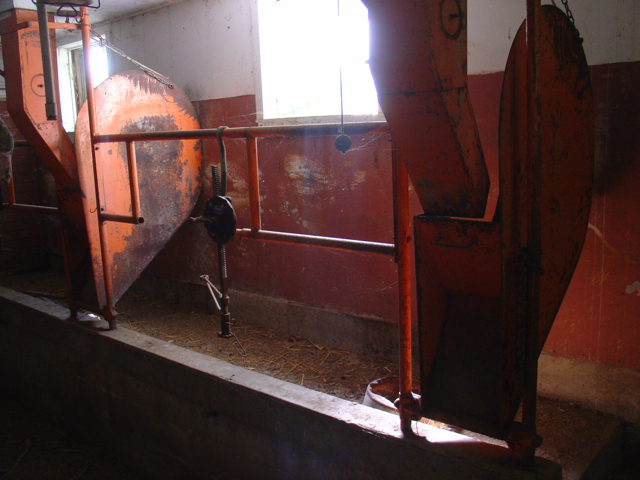 now has juvenile chicks in it. I chose all black and white chickens for inspiration!
now has juvenile chicks in it. I chose all black and white chickens for inspiration!
The small interior area is more than made up for by having a lot of area outside to develop!
On one side of the milkhouse is a slab where the cows used to wait to come in. The fence around it is all rotted and gone but we shoveled the dirt off it and pulled out the small bushes that had grown up in it and made a little patio area.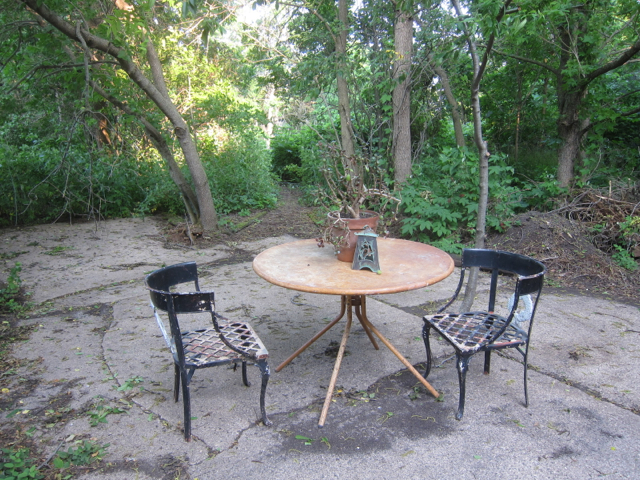 To the north I’ve put in a couple of flower beds
To the north I’ve put in a couple of flower beds  and much of the dead wood was set aside for firewood in the winter.
and much of the dead wood was set aside for firewood in the winter.
My mother gave me her old wood stove for this coming fall and winter. We will need to put in a good stove pipe (there is one but I don’t trust it). I really look forward to going out there and building a fire in the morning and making it cozy. I’ll let you know how I feel about that when it’s 20 below zero!
In the course of this journey found out my kiln needs much more power than the little milkhouse is wired for. We had an electrician out I learned a little bit about amps and panels and mostly that we can’t afford to upgrade the power to the milkhouse. Instead, I feel very lucky to have the Arts Guild in town which will allows members to bisk their work for a small fee and also that several potters in the area do a group firing of cone 10 reduction kiln! So my current firing needs can be met until we decide how we want to tackle the “kiln problem” which is as much a creative choice as it is a financial and technical one. By creative I mean, what kind of firing do I want to do? Electric oxidation? Wood, soda or gas?
So here I am, 2 months into our big change-of-life, I’ve got about 50 pots made and often, as I stride across the farm yard, I flash on my youth, my many crossings and journeys across this particular space in time; my path only dictated by buildings now missing or inhabited by my grandfather and his cows in that time instead of me and my pots now. The milkhouse seems so happy to have purpose or perhaps to contain purpose again; to be used and inhabited by a human and animals (the chickens) certainly it is now my place of work, of creating. I hope my clay dust will not obliterate the slightly milky smell it still has.
Since she passed away, I have often thought of my grandmother, I always carry her with me, as she was the embodiment of home life, kitchen doings and indoor games. She is portable and home tasks and crockery evoke her. But grandpa is of this place; of these fields of driving a tractor under this huge sky and the crops and the pastures. It is he who I envision walking across the space out back, carrying 2 bales of hay, strong and patient. I love being here. I love honoring both of my grandparents with hard work, patience, with just the sheer joy of the beauty of this place and the pleasure of existence that comes from purpose and gratitude.
